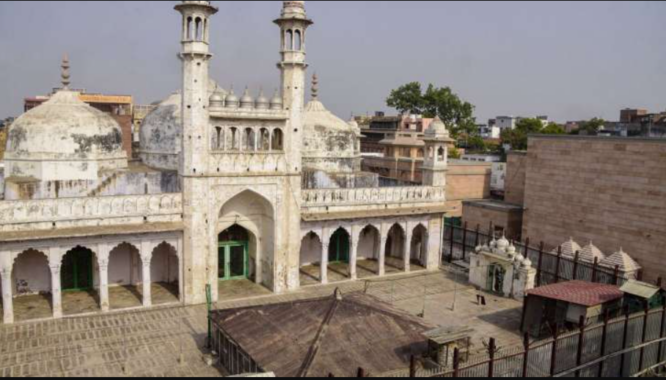The Allahabad high court permitted carbon dating of the ‘Shivling’ at the Gyanvapi mosque in Uttar Pradesh on Friday.
The court ordered the Archaeological Survey of India (ASI) to conduct carbon dating without damaging the structure of the ‘Shivling’ discovered on the grounds of the mosque.
It reversed a 14 October order of the Varanasi district court that denied a petition for a scientific investigation of the structure, including carbon dating.

The judgment was issued by Justice Arvind Kumar Mishra in response to a petition challenging the decision of the court in Varanasi.
It is part of a fountain in the ‘wazu khana’, where ablution is performed prior to namaz, according to the mosque administration.
Allahabad High Court Allows Carbon Dating of Gyanwapi Mosque Shivling
The pond complex of the mosque was sealed on May 16, 2022, after an alleged ‘Shivling’ was discovered in the pond the same day during a court commission survey.
In April, the court reprimanded ASI director general V Vidyavathi for failing to submit a report on the carbon dating of the alleged Shivling discovered in the Gyanvapi mosque complex despite being given multiple opportunities.

It had referred to the ASI DG’s inaction as a “lethargic attitude” and stated, “Inaction appears to have impeded the proceedings of this court with regard to deliberation and disposition of this revision.
Earlier, on March 20, while expressing displeasure over the ASI’s failure to file a response despite being given eight weeks to do so, the high court gave the ASI a final opportunity to file a response clarifying whether carbon dating of the object (supposed Shivling) could damage it or whether its age can be evaluated safely.
In November of last year, it requested a response from the ASI and directed the DG to provide an opinion on whether carbon dating, ground penetrating radar (GPR), excavation, and other techniques should be used to determine the structure’s age, nature, and other pertinent information.
Carbon dating is a technique for determining the age of very ancient objects by measuring the quantities of various carbon forms present in them.

